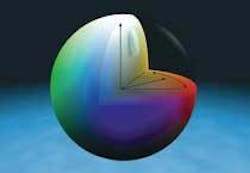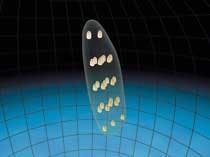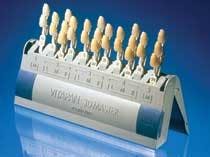Evidence-based shade communication
by Mark Murphy, DDS
While in dental school in 1981, we were introduced to the new hue and Bio-Form shade guides to describe what we saw in a patient’s mouth and communicate that to a dental laboratory. In private practice, I was introduced to the Vita Lumin shade system, where the A’s, B’s, C’s, and D’s grouped together by chroma and hue looked so much more lifelike and realistic for teeth. This “new” language was exciting because it was more predictable and lifelike. It has been the standard of care in shade communication for more than 50 years.
It turned out, however, that this shade communication language was already 25 years old in 1981. It had been introduced by Vita in Germany in 1956, my birth year. A denture technician decided that he could do a better job of representing natural-occurring tooth shades.
It had been an arbitrary assessment, with improved clinical relevance and no scientific basis or research supported by CIELAB, an international organization for color standards. It turns out only 14 of the tabs match naturaloccurring tooth shades and they are distributed randomly (not systematically), leaving two-thirds of the tooth color space woefully underrepresented. See Figures 1 and 2.
Even though we have up to 20 times more rods than cones in our eyes and are far more sensitive to variations in object brightness than we are to color, this older system was arranged only by chroma and hue. This intensity and color tone guide makes it harder for us to match the most important aspect of shades — value.
When you squint at a restoration to see if it blends in well, you are actually taking your cones (located in your fovea) out of focus and letting the rods evaluate the brightness. In fact, after value, the chroma is next in importance and hue ranks last. See Figure 3.
Fast forward to 1998. The same company, Vita, took the scientific information provided by organizations like CIELAB and rearranged and added tabs. This shade guide is called the Vita 3-D Master. See Figure 4.
The 26 natural-occurring shades in the 3-D Master Shade Guide (plus three bleach shades) are distributed evenly throughout the color space. When you include half shades, it allows us enough “words” in a language to describe 81 tooth shades quickly and easily by matching value, then chroma, and finally hue. Its scientific notation tells you the value, chroma, and hue of each shade. 3M1 is from the 3 Value group (0-5), M Mid Ivory (vs. Red or Yellow), and 1 Chroma intensity (1-3). It is a systematic assessment of clinically relevant scientific evidence — truly an example of evidence-based dentistry in action. Let’s not take 25 years for this to become the new standard shade communication language.
Mark Murphy is a featured presenter for the National Dental Network and the National Lab Network. He lectures internationally on a variety of dental clinical and behavioral subjects. He practices part time in Rochester Hills, Mich., and is director of professional relations at The Pankey Institute. Contact him by e-mail at [email protected] or visit mtmurphydds.com.




